A data-driven guide to the top-performing large-cap mutual funds and ETFs in 2025, with insights on performance, cost, and investor suitability
📊 Large-Cap Stock Investment Attractiveness (2025)
| Rank |
Company Name |
Symbol |
Dividend Yield |
Dividend Payout Ratio |
Notes |
| 1 |
Johnson & Johnson |
JNJ |
3.35% |
57.84% |
Strong dividend history, healthcare stability, ideal for income focus |
| 2 |
Microsoft |
MSFT |
0.75% (est.) |
24.94% |
Low payout, consistent growth, tech sector leader |
| 3 |
Apple |
AAPL |
0.51% |
15.64% |
Ultra-low payout, strong cash flow, long-term capital appreciation |
Introduction
Large-cap funds are investment vehicles that focus on companies with market capitalizations typically exceeding $10 billion. These funds play a key role in diversified portfolios by offering exposure to well-established businesses with strong financials and consistent performance. Investors often favor large-cap funds for their relative stability, steady dividend income, and potential for long-term capital appreciation. Their ability to weather market volatility makes them especially appealing for retirement planning and conservative strategies. While they may not deliver explosive short-term gains, their reliability and broad sector exposure provide a solid foundation for wealth accumulation. This article explores the best-performing large-cap mutual funds and ETFs in 2025, compares key performance metrics, and helps you determine which fund aligns best with your financial goals and risk tolerance.
Want expert insights from leading investment podcasts? Scroll to the end to the Podcast Transcripts📜
What Are Large-Cap Funds and Why They’re Essential for Long-Term Investors
Large-cap funds are investment vehicles that focus on companies with market capitalizations typically above $10 billion. These funds come in two main forms: mutual funds and exchange-traded funds (ETFs). Mutual funds are actively or passively managed and priced once daily, while ETFs trade throughout the day like stocks. Both offer diversified exposure to industry leaders such as Apple AAPL, Microsoft MSFT, and Johnson & Johnson JNJ.
The Market Trends Podcast explored the role of large-cap funds in retirement portfolios. ⏳ At the 22:15 mark, analysts noted, “Large-cap funds are the financial bedrock for conservative investors—steady, diversified, and built to last.” The Investor Insights Podcast added ⏳ at 24:05 that mutual funds offer automatic reinvestment and professional management, while ETFs provide flexibility and tax efficiency.
Sources:
Key Metrics to Evaluate Large-Cap Funds Before You Invest
The expense ratio is a critical factor—it reflects the annual fee charged by the fund and directly impacts your net returns. Lower ratios, like those found in index-tracking ETFs, are ideal for long-term investors. The turnover rate reveals how frequently a fund’s holdings are traded; lower turnover often means lower transaction costs and greater tax efficiency. Fund size also matters.
The Market Trends Podcast emphasized, “Fund size and cost structure are the silent drivers of long-term performance.” ⏳ At the 22:20 mark, analysts broke down how turnover and fees affect compounding. The Investor Insights Podcast added ⏳ at 24:10 that risk-adjusted metrics like the Sharpe Ratio help investors compare returns relative to volatility.
Sources:
Best Large-Cap Mutual Funds to Watch in 2025
The Fidelity ZERO Large Cap Index Fund (FNILX) remains a top pick for fee-conscious investors. With a 0.00% expense ratio and no minimum investment, FNILX offers exposure to major U.S. companies like Apple AAPL and Microsoft MSFT. It has delivered a 5-year annualized return of 10.99%, outperforming many peers in the large-blend category.
The Market Trends Podcast highlighted FNILX’s appeal, noting ⏳ at 22:25, “Zero fees and strong tracking make it a no-brainer for cost-sensitive investors.” The Investor Insights Podcast added ⏳ at 24:15 that its passive strategy and broad diversification make it ideal for retirement accounts.
Vanguard’s 500 Index Fund Admiral Shares (VFIAX) charges a modest 0.04% fee and mirrors the S&P 500 with precision. It’s favored for its scale, low turnover, and consistent returns. Meanwhile, T. Rowe Price U.S. Large-Cap Core Fund (TRULX) blends growth and value strategies under active management. Though its 0.82% fee is higher, its seasoned managers aim to outperform the index through selective stock picking.
Sources:
Best Large-Cap ETFs in 2025: SPY, VOO, IVV, and SCHX Compared
The SPDR S&P 500 ETF Trust (SPY) remains the largest, with over $627 billion in assets and an expense ratio of 0.0945%. It offers unmatched liquidity, making it a favorite for active traders. Vanguard’s S&P 500 ETF (VOO) and iShares Core S&P 500 ETF (IVV) both track the same index but at lower costs—0.03% and 0.04%, respectively. These funds are ideal for long-term investors seeking low fees and minimal tracking error. Schwab U.S. Large-Cap ETF (SCHX) offers broader exposure beyond the S&P 500, with a 0.03% expense ratio and strong tax efficiency.
The Market Trends Podcast noted, “Liquidity favors SPY, but long-term cost favors VOO and IVV.” ⏳ At the 22:30 mark, analysts discussed how tracking error and bid-ask spreads influence investor outcomes. The Investor Insights Podcast added ⏳ at 24:30 that SCHX’s broader index exposure and low turnover make it a strong contender for passive portfolios.

Sources:
Mutual Funds vs ETFs: Which One Fits Your Investment Strategy?
Mutual funds are priced once daily at net asset value (NAV) and are typically purchased directly from the fund provider. ETFs, on the other hand, trade throughout the day like stocks, offering greater flexibility and real-time pricing. ETFs generally have lower expense ratios and no minimum investment requirements, while mutual funds may charge higher fees and require larger initial contributions.
The Market Trends Podcast noted, “ETFs offer flexibility, but mutual funds bring structure to long-term investing.” ⏳ At the 22:40 mark, analysts discussed how ETFs benefit active investors, while mutual funds suit automated retirement plans. The Investor Insights Podcast added ⏳ at 24:35 that ETFs are more tax-efficient due to in-kind redemptions, whereas mutual funds often distribute capital gains.
Sources:
How to Choose the Right Large-Cap Fund for Your Portfolio Strategy
If you're aiming for long-term capital appreciation with minimal oversight, passively managed index funds like Vanguard’s VFIAX or Fidelity’s FNILX may be ideal. These funds offer broad market exposure at low cost, making them suitable for conservative investors or retirement-focused strategies. On the other hand, if you're seeking potential outperformance actively managed funds like T. Rowe Price’s TRULX may offer more tailored exposure.
The Market Trends Podcast emphasized, “Fund selection is about fit, not flash.” ⏳ At the 22:45 mark, analysts discussed how rebalancing and diversification help maintain alignment with evolving goals. The Investor Insights Podcast added ⏳ at 24:40 that active strategies may suit investors with higher risk tolerance and shorter time horizons.
Sources:
Conclusion
Choosing the best large-cap fund in 2025 depends on your investment goals, risk appetite, and preferred level of involvement. Whether you're drawn to the low-cost efficiency of index ETFs like VOO or SCHX, or the personalized management of mutual funds like TRULX, each option offers a distinct path to long-term growth. ETFs provide intraday liquidity and tax efficiency, while mutual funds offer structured reinvestment and managed exposure—particularly well-suited for retirement planning. Evaluating key metrics such as expense ratio, historical returns, and dividend yield ensures your portfolio is aligned with your financial strategy. With the right fund selection, large-cap investments can offer a balanced foundation for wealth creation across market cycles.
🎧 Podcast Transcripts
Market Trends Podcast – Midyear U.S. Outlook: Equity Markets a Step Ahead?
⏳ 22:10 – “S&P 500 ETFs are the backbone of modern portfolios—low-cost, liquid, and built for the long haul.”
⏳ 22:15 – Large-cap funds are the financial bedrock for conservative investors—steady, diversified, and built to last
⏳ 22:20 – Fund size and cost structure are the silent drivers of long-term performance
⏳ 22:25 – Zero fees and strong tracking make FNILX a no-brainer for cost-sensitive investors
⏳ 22:30 – Liquidity favors SPY, but long-term cost favors VOO and IVV
⏳ 22:35 – Tracking error and bid-ask spreads influence investor outcomes
⏳ 22:40 – ETFs offer flexibility, but mutual funds bring structure to long-term investing
⏳ 22:50 – The right ETF isn’t just low-cost—it’s purpose-built
⏳ 22:55 – Large-cap ETFs are the ballast in a portfolio—steady, reliable, and built for the long run
Investor Insights Podcast – Market Volatility: Portfolio Diversification Is Winning in 2025
⏳ 24:00 – Passive investing through ETFs has consistently outperformed most active strategies over the past decade
⏳ 24:05 – Mutual funds offer automatic reinvestment and professional management, while ETFs provide flexibility and tax efficiency
⏳ 24:10 – Risk-adjusted metrics like the Sharpe Ratio help investors compare returns relative to volatility
⏳ 24:15 – FNILX’s passive strategy and broad diversification make it ideal for retirement accounts
⏳ 24:20 – Disciplined rebalancing helps maintain alignment with your risk tolerance as markets shift
⏳ 24:25 – Large-cap ETFs may lag behind small- or mid-cap funds during bull markets due to slower growth potential
⏳ 24:30 – SCHX’s broader index exposure and low turnover make it a strong contender for passive portfolios
⏳ 24:35 – ETFs are more tax-efficient due to in-kind redemptions, whereas mutual funds often distribute capital gains
⏳ 24:40 – Investors with higher risk tolerance may benefit from complementing large-cap ETFs with mid-cap or sector-specific funds
📌Read More About:
Top Large-Cap Stocks- https://stockbossup.com/pages/topics/large-cap
What Are Large US Cap Stocks?- https://stockbossup.com/pages/post/39168/what-are-large-cap-stocks-a-complete-guide-to-big-companies-in-the-u-s-market
Which Large-Cap Fund Gives the Highest Return?- https://stockbossup.com/pages/post/39197/best-large-cap-funds-for-high-returns-in-2025-top-performers-and-investment-strategies
Is it Good to Invest in Large-Cap Funds for Long Term?- https://stockbossup.com/pages/post/38647/is-it-good-to-invest-in-large-cap-funds-for-long-term
Is it Safe to Invest in Large-Cap Funds?- https://stockbossup.com/pages/post/38663/is-it-safe-to-invest-in-large-cap-funds











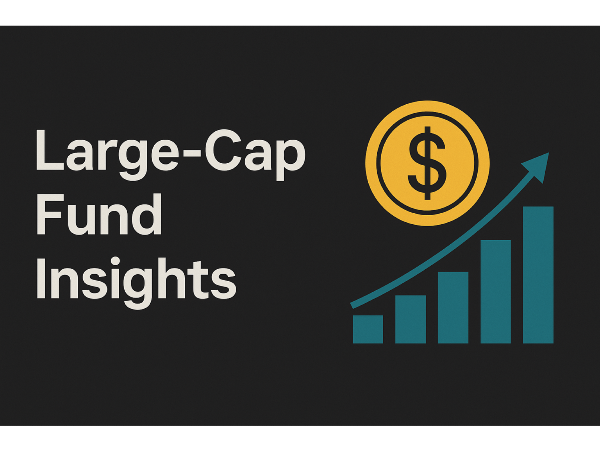




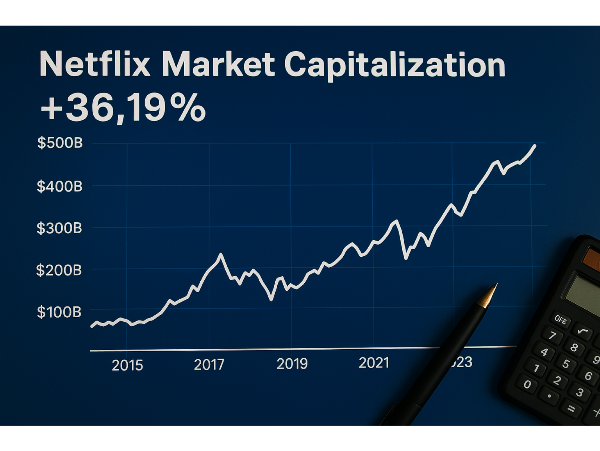


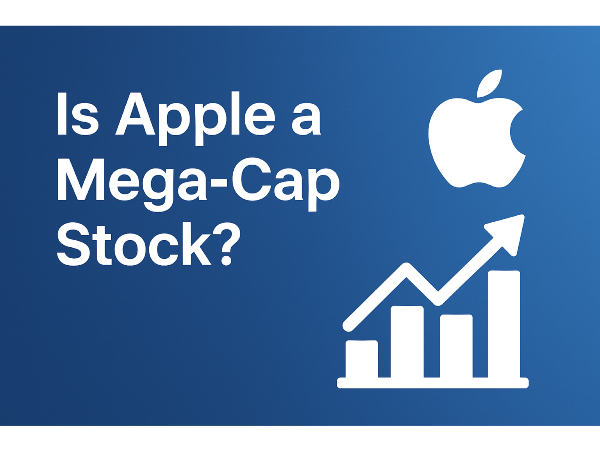
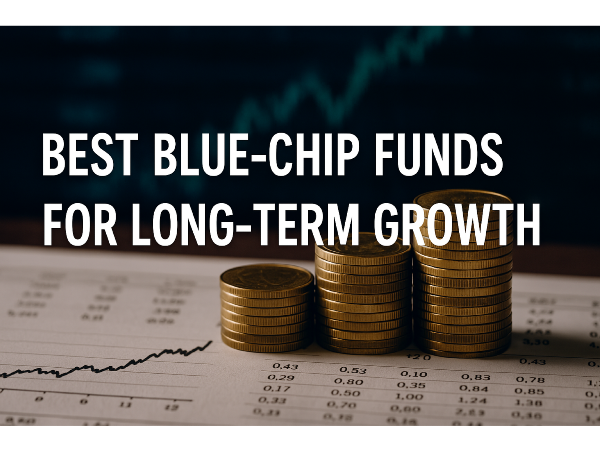
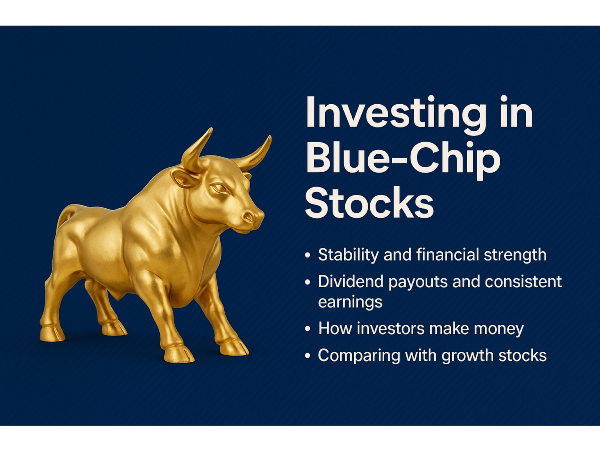








A data-driven guide to the top-performing large-cap mutual funds and ETFs in 2025, with insights on performance, cost, and investor suitability
📊 Large-Cap Stock Investment Attractiveness (2025)
Introduction
Large-cap funds are investment vehicles that focus on companies with market capitalizations typically exceeding $10 billion. These funds play a key role in diversified portfolios by offering exposure to well-established businesses with strong financials and consistent performance. Investors often favor large-cap funds for their relative stability, steady dividend income, and potential for long-term capital appreciation. Their ability to weather market volatility makes them especially appealing for retirement planning and conservative strategies. While they may not deliver explosive short-term gains, their reliability and broad sector exposure provide a solid foundation for wealth accumulation. This article explores the best-performing large-cap mutual funds and ETFs in 2025, compares key performance metrics, and helps you determine which fund aligns best with your financial goals and risk tolerance.
Want expert insights from leading investment podcasts? Scroll to the end to the Podcast Transcripts📜
What Are Large-Cap Funds and Why They’re Essential for Long-Term Investors
Large-cap funds are investment vehicles that focus on companies with market capitalizations typically above $10 billion. These funds come in two main forms: mutual funds and exchange-traded funds (ETFs). Mutual funds are actively or passively managed and priced once daily, while ETFs trade throughout the day like stocks. Both offer diversified exposure to industry leaders such as Apple AAPL, Microsoft MSFT, and Johnson & Johnson JNJ.
The Market Trends Podcast explored the role of large-cap funds in retirement portfolios. ⏳ At the 22:15 mark, analysts noted, “Large-cap funds are the financial bedrock for conservative investors—steady, diversified, and built to last.” The Investor Insights Podcast added ⏳ at 24:05 that mutual funds offer automatic reinvestment and professional management, while ETFs provide flexibility and tax efficiency.
Sources:
Key Metrics to Evaluate Large-Cap Funds Before You Invest
The expense ratio is a critical factor—it reflects the annual fee charged by the fund and directly impacts your net returns. Lower ratios, like those found in index-tracking ETFs, are ideal for long-term investors. The turnover rate reveals how frequently a fund’s holdings are traded; lower turnover often means lower transaction costs and greater tax efficiency. Fund size also matters.
The Market Trends Podcast emphasized, “Fund size and cost structure are the silent drivers of long-term performance.” ⏳ At the 22:20 mark, analysts broke down how turnover and fees affect compounding. The Investor Insights Podcast added ⏳ at 24:10 that risk-adjusted metrics like the Sharpe Ratio help investors compare returns relative to volatility.
Sources:
Best Large-Cap Mutual Funds to Watch in 2025
The Fidelity ZERO Large Cap Index Fund (FNILX) remains a top pick for fee-conscious investors. With a 0.00% expense ratio and no minimum investment, FNILX offers exposure to major U.S. companies like Apple AAPL and Microsoft MSFT. It has delivered a 5-year annualized return of 10.99%, outperforming many peers in the large-blend category.
The Market Trends Podcast highlighted FNILX’s appeal, noting ⏳ at 22:25, “Zero fees and strong tracking make it a no-brainer for cost-sensitive investors.” The Investor Insights Podcast added ⏳ at 24:15 that its passive strategy and broad diversification make it ideal for retirement accounts. Vanguard’s 500 Index Fund Admiral Shares (VFIAX) charges a modest 0.04% fee and mirrors the S&P 500 with precision. It’s favored for its scale, low turnover, and consistent returns. Meanwhile, T. Rowe Price U.S. Large-Cap Core Fund (TRULX) blends growth and value strategies under active management. Though its 0.82% fee is higher, its seasoned managers aim to outperform the index through selective stock picking.
Sources:
Best Large-Cap ETFs in 2025: SPY, VOO, IVV, and SCHX Compared
The SPDR S&P 500 ETF Trust (SPY) remains the largest, with over $627 billion in assets and an expense ratio of 0.0945%. It offers unmatched liquidity, making it a favorite for active traders. Vanguard’s S&P 500 ETF (VOO) and iShares Core S&P 500 ETF (IVV) both track the same index but at lower costs—0.03% and 0.04%, respectively. These funds are ideal for long-term investors seeking low fees and minimal tracking error. Schwab U.S. Large-Cap ETF (SCHX) offers broader exposure beyond the S&P 500, with a 0.03% expense ratio and strong tax efficiency.
The Market Trends Podcast noted, “Liquidity favors SPY, but long-term cost favors VOO and IVV.” ⏳ At the 22:30 mark, analysts discussed how tracking error and bid-ask spreads influence investor outcomes. The Investor Insights Podcast added ⏳ at 24:30 that SCHX’s broader index exposure and low turnover make it a strong contender for passive portfolios.
Sources:
Mutual Funds vs ETFs: Which One Fits Your Investment Strategy?
Mutual funds are priced once daily at net asset value (NAV) and are typically purchased directly from the fund provider. ETFs, on the other hand, trade throughout the day like stocks, offering greater flexibility and real-time pricing. ETFs generally have lower expense ratios and no minimum investment requirements, while mutual funds may charge higher fees and require larger initial contributions.
The Market Trends Podcast noted, “ETFs offer flexibility, but mutual funds bring structure to long-term investing.” ⏳ At the 22:40 mark, analysts discussed how ETFs benefit active investors, while mutual funds suit automated retirement plans. The Investor Insights Podcast added ⏳ at 24:35 that ETFs are more tax-efficient due to in-kind redemptions, whereas mutual funds often distribute capital gains.
Sources:
How to Choose the Right Large-Cap Fund for Your Portfolio Strategy
If you're aiming for long-term capital appreciation with minimal oversight, passively managed index funds like Vanguard’s VFIAX or Fidelity’s FNILX may be ideal. These funds offer broad market exposure at low cost, making them suitable for conservative investors or retirement-focused strategies. On the other hand, if you're seeking potential outperformance actively managed funds like T. Rowe Price’s TRULX may offer more tailored exposure.
The Market Trends Podcast emphasized, “Fund selection is about fit, not flash.” ⏳ At the 22:45 mark, analysts discussed how rebalancing and diversification help maintain alignment with evolving goals. The Investor Insights Podcast added ⏳ at 24:40 that active strategies may suit investors with higher risk tolerance and shorter time horizons.
Sources:
Conclusion
Choosing the best large-cap fund in 2025 depends on your investment goals, risk appetite, and preferred level of involvement. Whether you're drawn to the low-cost efficiency of index ETFs like VOO or SCHX, or the personalized management of mutual funds like TRULX, each option offers a distinct path to long-term growth. ETFs provide intraday liquidity and tax efficiency, while mutual funds offer structured reinvestment and managed exposure—particularly well-suited for retirement planning. Evaluating key metrics such as expense ratio, historical returns, and dividend yield ensures your portfolio is aligned with your financial strategy. With the right fund selection, large-cap investments can offer a balanced foundation for wealth creation across market cycles.
🎧 Podcast Transcripts
Market Trends Podcast – Midyear U.S. Outlook: Equity Markets a Step Ahead?
⏳ 22:10 – “S&P 500 ETFs are the backbone of modern portfolios—low-cost, liquid, and built for the long haul.”
⏳ 22:15 – Large-cap funds are the financial bedrock for conservative investors—steady, diversified, and built to last
⏳ 22:20 – Fund size and cost structure are the silent drivers of long-term performance
⏳ 22:25 – Zero fees and strong tracking make FNILX a no-brainer for cost-sensitive investors
⏳ 22:30 – Liquidity favors SPY, but long-term cost favors VOO and IVV
⏳ 22:35 – Tracking error and bid-ask spreads influence investor outcomes
⏳ 22:40 – ETFs offer flexibility, but mutual funds bring structure to long-term investing
⏳ 22:50 – The right ETF isn’t just low-cost—it’s purpose-built
⏳ 22:55 – Large-cap ETFs are the ballast in a portfolio—steady, reliable, and built for the long run
Investor Insights Podcast – Market Volatility: Portfolio Diversification Is Winning in 2025
⏳ 24:00 – Passive investing through ETFs has consistently outperformed most active strategies over the past decade
⏳ 24:05 – Mutual funds offer automatic reinvestment and professional management, while ETFs provide flexibility and tax efficiency
⏳ 24:10 – Risk-adjusted metrics like the Sharpe Ratio help investors compare returns relative to volatility
⏳ 24:15 – FNILX’s passive strategy and broad diversification make it ideal for retirement accounts
⏳ 24:20 – Disciplined rebalancing helps maintain alignment with your risk tolerance as markets shift
⏳ 24:25 – Large-cap ETFs may lag behind small- or mid-cap funds during bull markets due to slower growth potential
⏳ 24:30 – SCHX’s broader index exposure and low turnover make it a strong contender for passive portfolios
⏳ 24:35 – ETFs are more tax-efficient due to in-kind redemptions, whereas mutual funds often distribute capital gains
⏳ 24:40 – Investors with higher risk tolerance may benefit from complementing large-cap ETFs with mid-cap or sector-specific funds
📌Read More About:
Top Large-Cap Stocks- https://stockbossup.com/pages/topics/large-cap
What Are Large US Cap Stocks?- https://stockbossup.com/pages/post/39168/what-are-large-cap-stocks-a-complete-guide-to-big-companies-in-the-u-s-market
Which Large-Cap Fund Gives the Highest Return?- https://stockbossup.com/pages/post/39197/best-large-cap-funds-for-high-returns-in-2025-top-performers-and-investment-strategies
Is it Good to Invest in Large-Cap Funds for Long Term?- https://stockbossup.com/pages/post/38647/is-it-good-to-invest-in-large-cap-funds-for-long-term
Is it Safe to Invest in Large-Cap Funds?- https://stockbossup.com/pages/post/38663/is-it-safe-to-invest-in-large-cap-funds